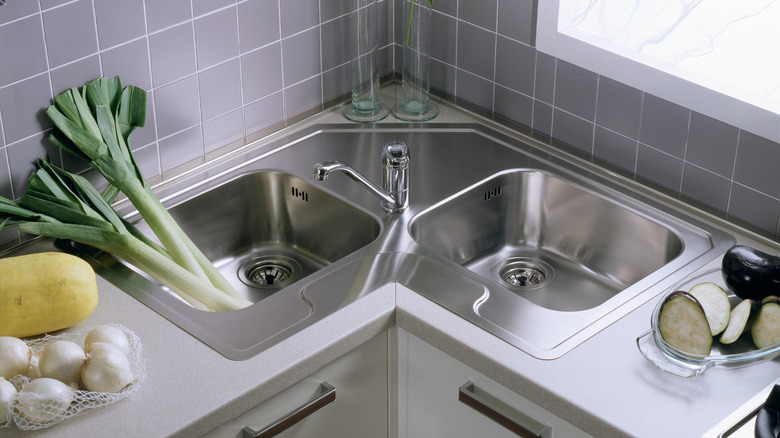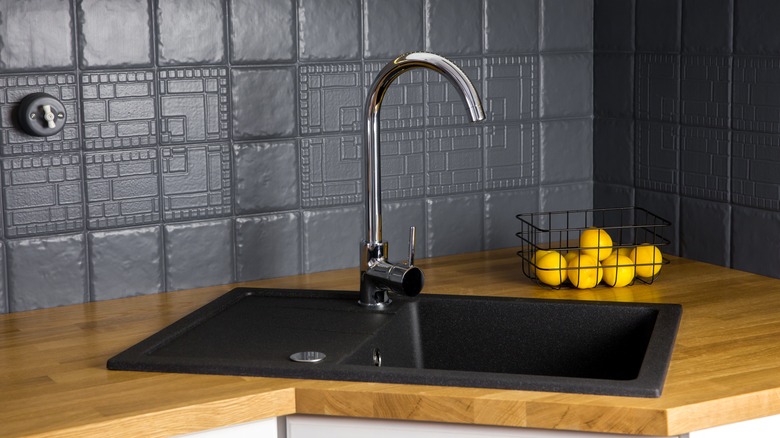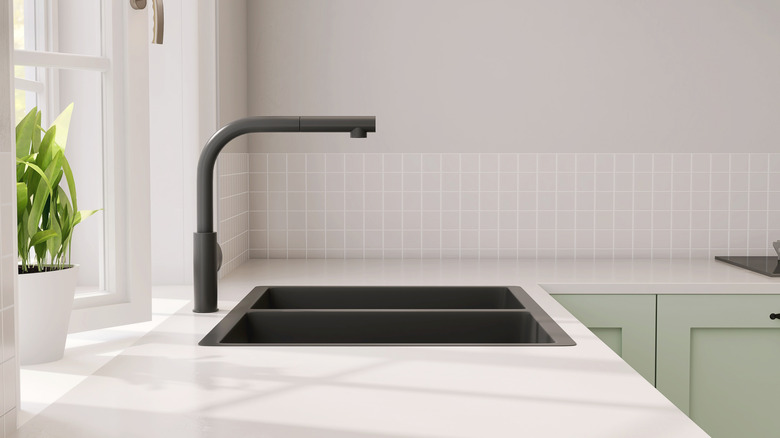What You Should Consider When Installing A Corner Kitchen Sink
Creating a kitchen layout that is perfect for your home can be tricky, especially if you have a small or otherwise unconventional space. Thankfully, there are quite a few design strategies you can use to maximize the functionality of your kitchen, regardless of any limitations you might be facing. For example, you can position your kitchen sink in an atypical way to better fit your needs. Corner kitchen sinks are a common way to do this. However, there are a few things you should consider when installing this type of sink. This includes determining whether your cabinet arrangement will need to change, selecting the right material, and deciding whether it is actually a good fit for your space.
Gathering this information will help the installation process go smoothly. Adding a new sink to your kitchen is quite the task, so you might aim to be as well-informed as possible before incorporating this design element. A corner sink is a great way to make use of that often bare spot in a kitchen. Let's dive into everything you need to know to get the most out of this innovative design feature.
Assess your kitchen for a successful corner sink installation
Before installing a corner sink, take some time to assess your kitchen to identify what changes you will need to make. It is also helpful to figure out whether this installation will actually help you save countertop space. If you have limited countertop room, making use of an empty corner by installing a sink there instead of going with the typical sink placement can help free up space.
You might have kitchen cabinets above the space that will hold your sink. They may need to be removed to provide enough room for you to use the sink comfortably. On the flipside, if you have cabinets below, you may not be able to use all the space once you install a sink there as well. You will also encounter quite a few limitations due to the location of the small, tucked away kitchen corner. For example, you will likely need to install a compact sink rather than a larger one
The corner space in most kitchens does not provide enough room to install a full-sized sink. If you typically have more than one person in the kitchen at a time, keep in mind that corner sinks generally do not allow for two people to use the sink area at once. The tucked away corner space is not ideal for working side-by-side with someone. After assessing your kitchen with these factors in mind, it should be a bit easier to find the perfect placement for your kitchen sink.
What materials should you use for a corner kitchen sink?
When installing a new kitchen sink, you must select a durable material that is appropriate for the space. Corner sinks can be made using a wide variety of materials, so you have quite a bit of flexibility. You can select an option that aligns with your desired aesthetic. Stainless steel is commonly used, but you could also go with something more unique.
Select a stunning matte black corner sink, for example. There are also rustic yet chic hammered copper corner sinks on the market. Consider getting creative with the layout of your corner sink as well. You could purchase one with an attached drainboard. If you are lucky enough to have a window placed in front of your kitchen counter corner, you will be able to enjoy peeking outside while using your corner sink. If you are installing this sink as part of a new build, you might want to consider including a window in front of it to enjoy this benefit.


